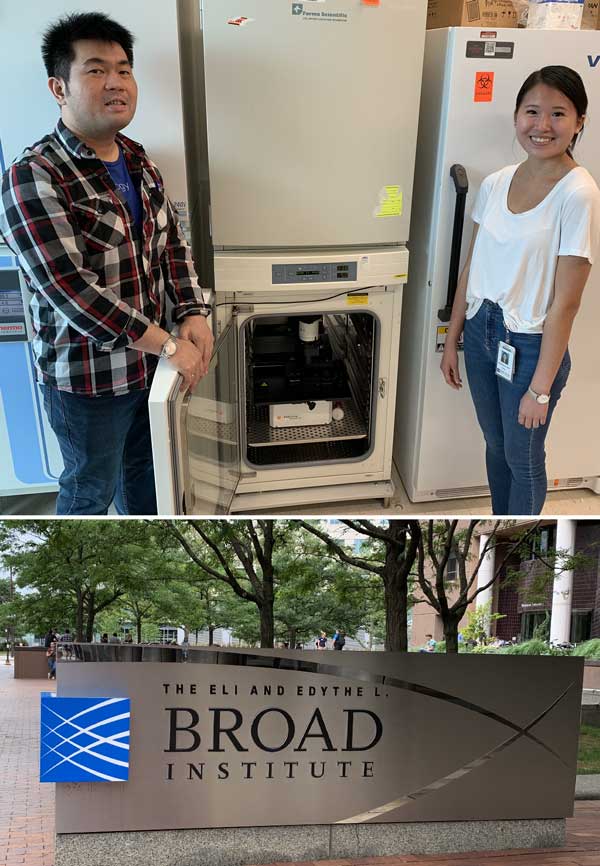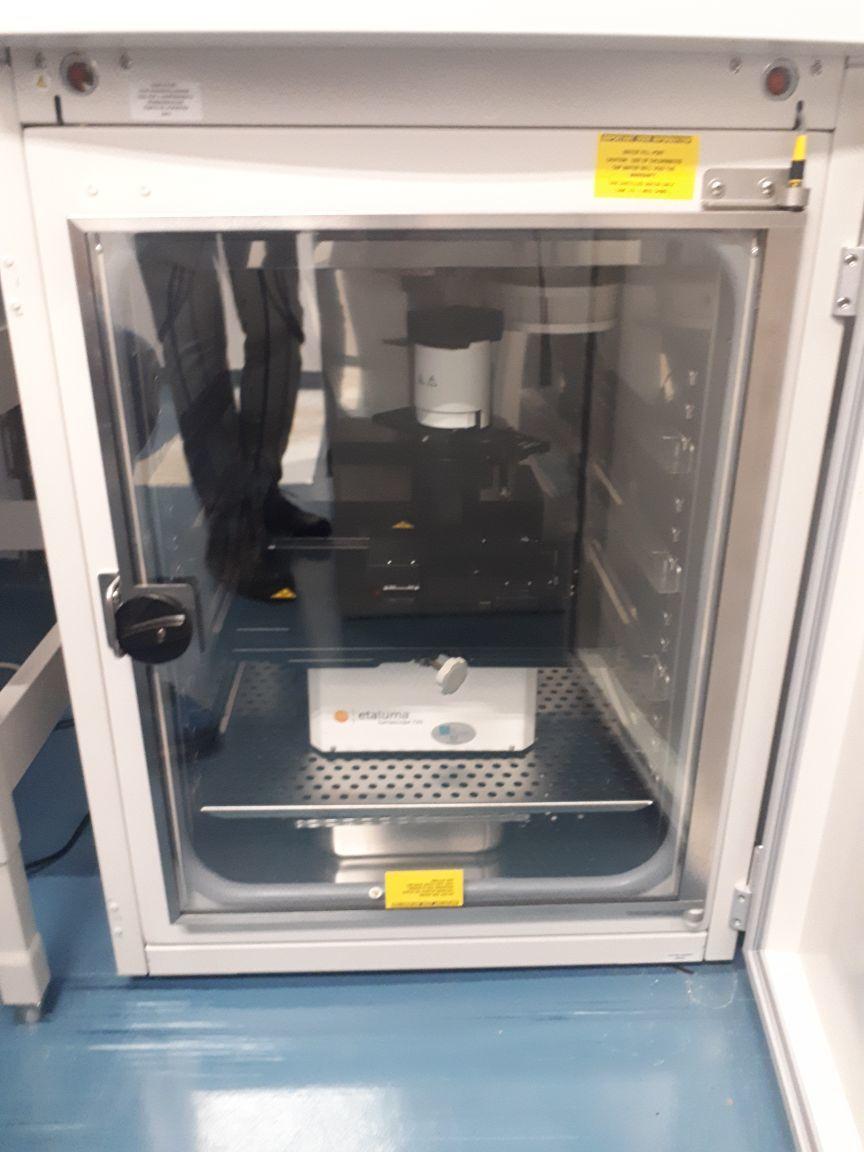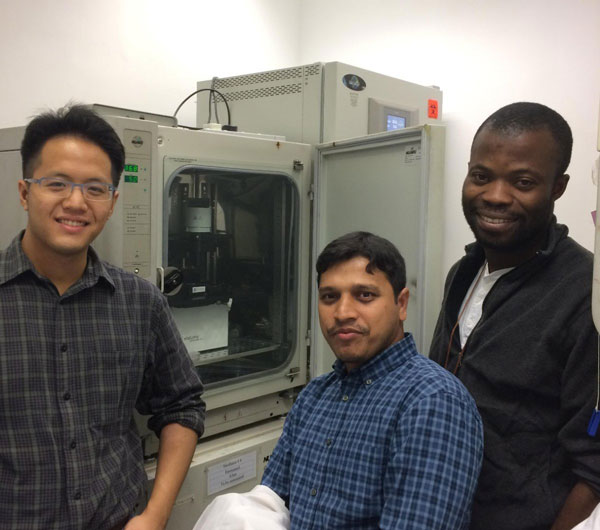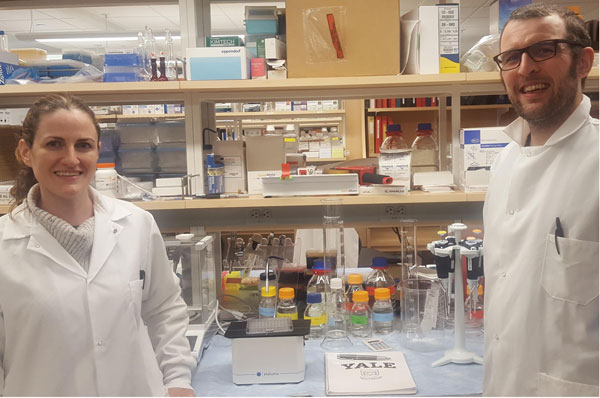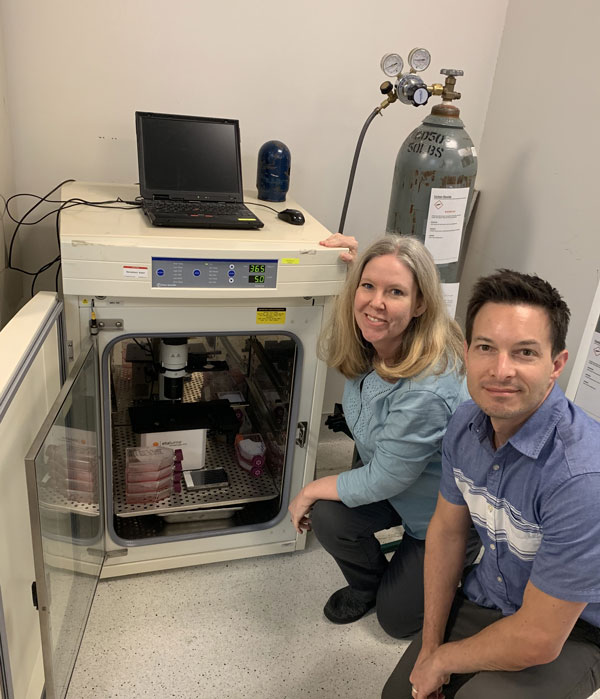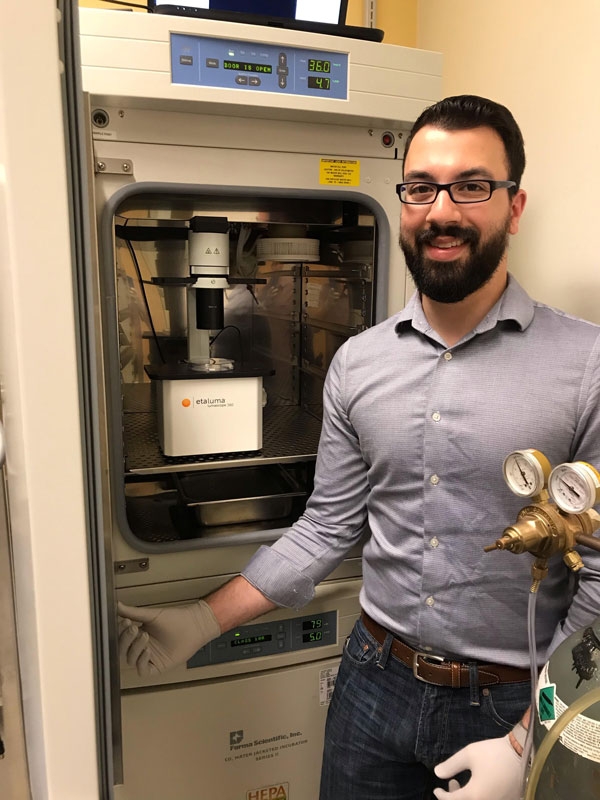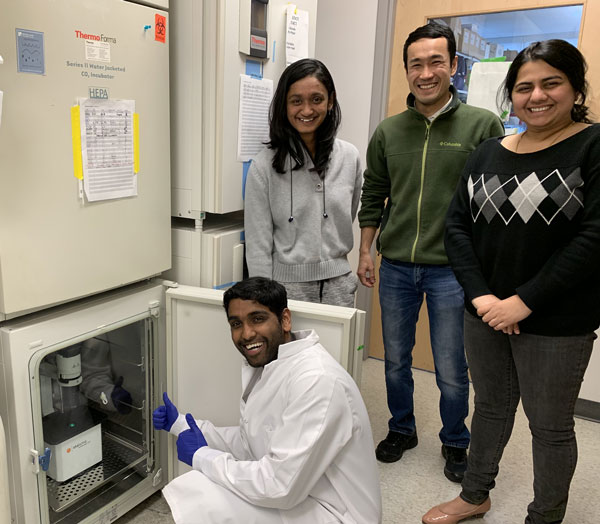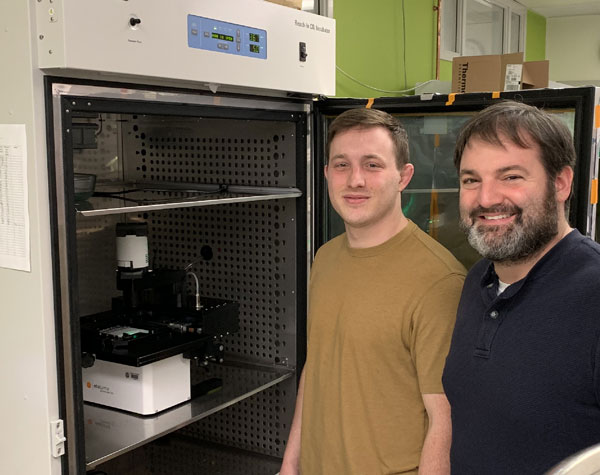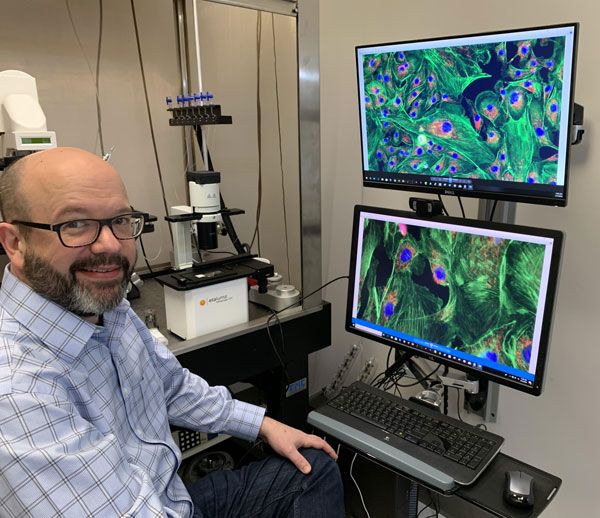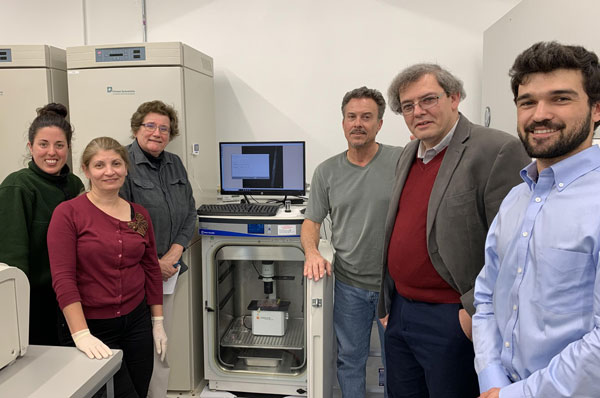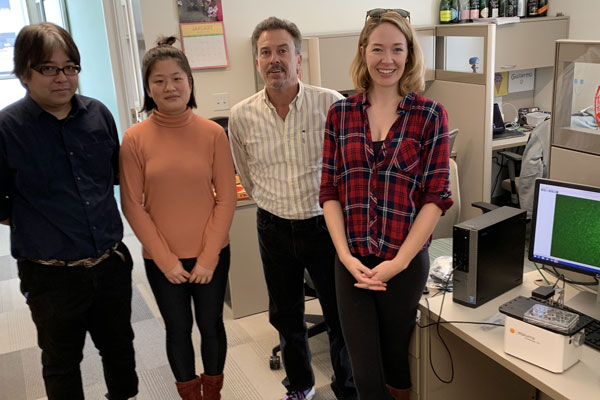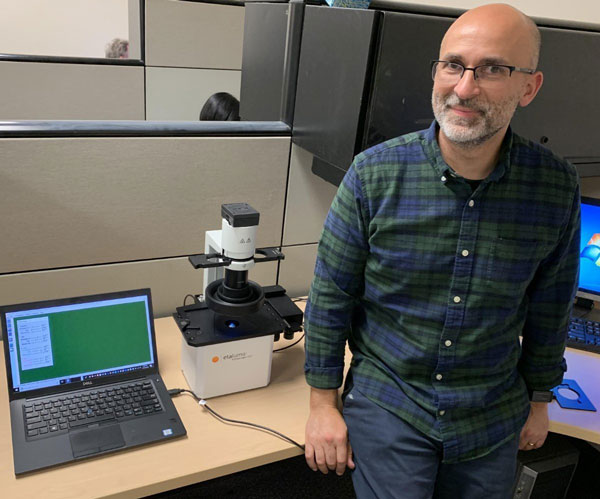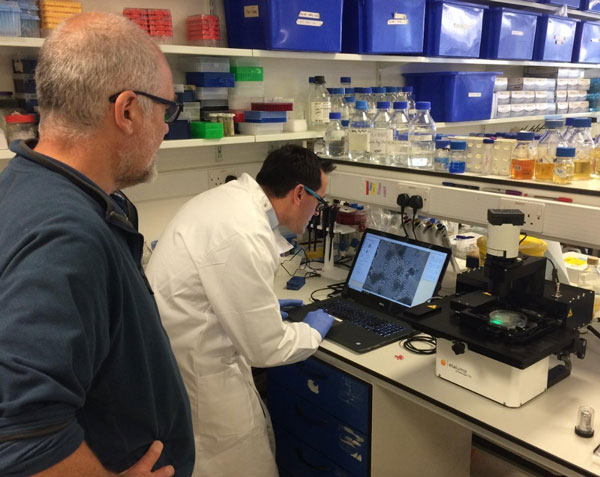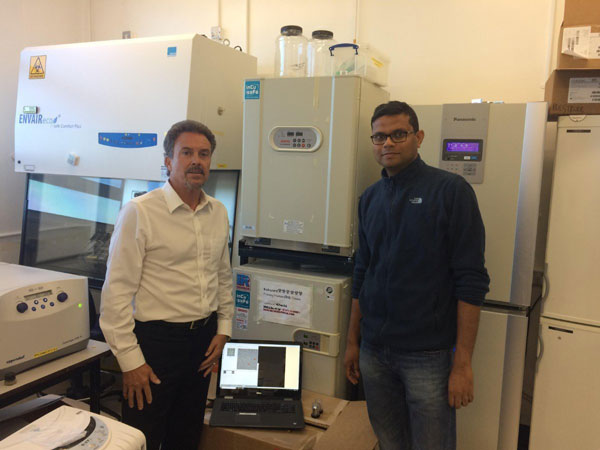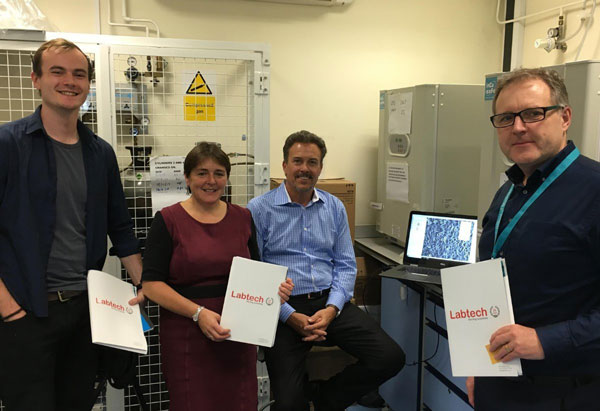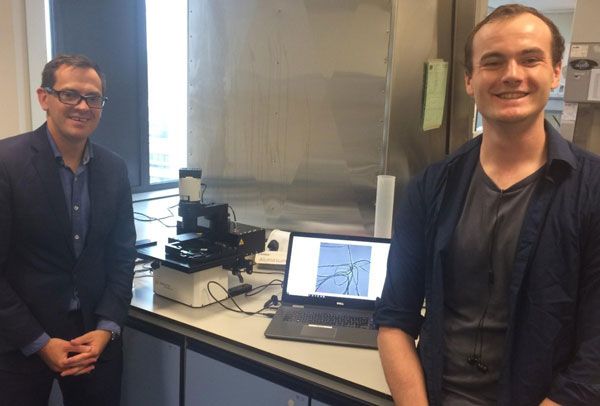Testimonials
“We perform perfusion based live cell experiments in which we record the cell behavior while subjecting them to shear stress under flowing media conditions. In addition, we use the microscope to check transfection and transduction efficiency of fluorescently labeled proteins, which we like to combine with phase contrast bright field microscopy to see intra-cellular location of the expressed proteins. The ability to do perfusion imaging inside a cell culture incubator rather than within an acrylic enclosure on a traditional microscope is key. Keeping the reagents within the same incubator makes experimental design much easier and long-term experiments over days and weeks are much more stable. Flexible control software allows us to do the custom experiments we want. The small footprint of the instrument makes it very easy to transport from lab to lab and to integrate it in different experimental set-ups. Open access to the imaging labware for fluidics integration and a general open architecture allows us to bring in the other tools we want to the live cell imaging experiment. There is no maintenance required and the LEDs have an almost endless live-cycle. The instrument is super easy to handle and even unexperienced users are able to perform imaging after very little training (and we don’t need to be afraid that hardware breaks – robustness). As I see it now there are two camps. The expensive traditional confocal and now super resolution microscopes that push the borders of what technology can achieve and are mainly purchased by core centers. And the other is small and compact imaging systems that are affordable by small working groups and are designed for one or two of their specific applications. Take a look at all of your choices for microscopes beyond the big four and pay attention to hardware and software customizability. Especially customizability and the fast integration of additional software features is always much easier when working with smaller sized companies and start-ups, as communication is direct.”
“We have been using the Lumascope 600 fluorescent microscopes for about 5 years for teaching neurobiology and cell biology undergraduate lab courses and are very happy with them.
They are compact and portable, so we can move 8-10 scopes from lab to lab very easily, and they have been reliable and simple to use. We can get great image results for most of our experiments using a gain between 30-50% and a light intensity of 10-15%, thus maximizing image quality and minimizing potential problems from bleaching. The scopes are easy to use and stand up to the abuse that students can sometimes inflict and the scopes have held over the years with no technical malfunction issues or any wear being evident. The Lumaview software is both comprehensive and easy to use in terms of image acquisition and file storage and access.
At half the price of conventional upright fluorescent microscopes, and less than half the space taken up, the choice for us was clear and we have been more than satisfied. “
“I received the Lumascope and decided to set it up myself. Took it out of the box, installed the software, assembly and software were so intuitive that I didn’t even need the manual, and took this image in 15 minutes. Seriously. It is a prepared slide – but still … And I used my own high NA objectives!“
“Please let me take a moment to thank you for manufacturing such a wonderful microscope. Our Etaluma LS560 was simple to install and performed robustly right out of the box with easy to navigate software. But what is far more important is the insight this microscope provides us on the biological processes that are of greatest interest to us. In the past we have had to rely on static observations – which provide no access whatsoever to processes that are extremely dynamic; in our case changing dramatically minute by minute. We look forward to exploring these hidden worlds to better understand the biologies of our systems.”
“The Lumascope 720 has massively increased the amount of data that we can obtain from a single experiment, the ability to take images or videos of all wells on a single multiwell plate is amazing. My lab develops advanced image quantification analysis and we have been able to use all our previous pipelines (initially developed for images obtained on inverted epi’s or confocal) with almost no troubleshooting.”
“We had our first successful run yesterday on our new LS720. Everything ran fine according to plan – and at 4oC! We are impressed with the wide range of operating temperatures for the LS Microscopes and also the flexibility of integration. In fact, the additional TTL trigger on the LS720 enabled the easiest automation setup I have ever done. Great job!”
“Extraction of quantitative data from time-lapse imaging can provide unprecedented insights into cell signaling in single cells. A limiting factor in moving this field forward is the cost of existing live imaging systems, until now. The Lumascope 720 has enabled our small budget laboratory to extract real-time data from our multi-color live cell reporters. Thanks to the 720, we have been able to switch over from expensive ELISA based broken cell assays that measure the average signal across heterogeneous populations of cells at a single time point to now acquiring essentially free data points at single cell resolution over time. Also, thanks to the motorized stage and multiwell format we don’t need to use our plate reader anymore.”
“We have been working with Etaluma on developing the fluorescence imaging portion of our instrument. After looking at many other options, we selected a Lumascope optics module and are working with Etaluma to maximize our dye imaging signal and customize the module body. We have found this to be a very cooperative process, sharing ideas back and forth, with the common goal of providing a quality product that meets our specifications at an affordable price.”
“We love the Lumascope 500 because now we can get accurate transfection efficiencies!”
“…I wanted to tell you how pleased I am with the Lumascope…It is really easy to use and the students love it. As you know, I have worked in the fluorescence field for 40 years and I must say that if I had to choose three excitation wavelengths for a general use instrument such as yours, these are the wavelengths I would pick … you will hit the majority of the most commonly used probes … In fact, given the huge number of fluorophores commercially available, and the very wide range of spectroscopic capabilities they represent, in my opinion customers should be motivated to find fluorophores suitable for your instrument and appropriate for their research.
Congratulations for developing such a useful instrument!”
“The Etaluma allowed us to resolve low intensity fluorescent labeling that our existing Axiovert 200M could not.”
“The Lumascope is really [a] wonderful product!”
“Very easy to use. Students love it and results so far meet our expectations.”
“We really enjoyed your microscope and can see many potential uses in our lab. We are also very interested in the 720 and will consider looking into one of those later in the summer.”
“The Lumascope 620 provides far brighter and more uniform illumination than I have ever seen on any microscope using a standard Xe, Hg, or incandescent illuminator. Bravo! Etaluma microscopes are far more reliable than any standard microscope. LEDs are the most stable light source made. The illumination field is the most uniform I’ve seen. Digital calculations never change. Accuracy/precision seem to be within 3%, again superior to analog light sources or anything adjustable by hand. Our 620 scopes are in heavy use by students in several lab courses, as more instructors found out about them and saw how reliable they are, how easy to use, and how reasonably priced. I think they are even starting to creep into some research labs which don’t need the full facility of a Zeiss microscope. When I last looked, Etaluma was way ahead of the competition.”
Here are a few more of our happy customers.
Copyright © 2024 Etaluma, Inc. All rights reserved.


